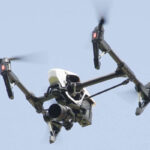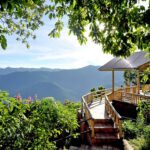If you are planning to spend your next safari holiday in the Democratic Republic of Congo and you are looking for the most exceptional conservation area to visit then Ngiri Reserve is the best choice that you should make and you won’t regret thereafter. The Ngiri Reserve is natural wonder of its own. It lies in the western side of Equateur province, Bomongo, Makanza and Bikoro border. A 1000 square kilometer reserve stretches to the north from the Congo River confluence and River Ubangi and its establishment is mainly to for refuge to most of its vast biodiversity and ecosystem. Initially, it was proposed to form the Ngiri triangle in 1975, an area which lies between Ubangi, Congo and Ngiri Rivers, however this was not accomplished.
But it was revived by World Wide Fund in the Lake Tele-Lake Tumba landscape project which included the Tumba Ngiri Maindombe wetland. Around 2010, the cooperation agreement between governments of the Republic of Congo and that of the DR Congo on the Lake Tele-Lake Tumba landscape offered for establishment of Ngiri reserve and the Mabali -scientific reserve to add on the Tumba-Lediima reserve in the DR Congo and Lake Tele community reserve in the Republic of the Congo. The Ngiri nature reserve was established by a decree of the Ministry of Environment in March 2011 with the engagement of the World Wide Fund (WWF).
Ngiri Reserve mainly consists of swamp forest, several streams and Rivers. Ngiri River flows from the north to south via the center of this conservation area prior connecting to the Ubangi. The large zone which surrounds the Ngiri nature reserve comprises of the changing marshy grassland savanna, swamp forests and seasonally flooded forests. The savanna is usually burnt during dry season while in some cases, it floods and the usual species of trees which grow here include the Entandrophragma palustre, Uapaca heudelotii Coelocaryon botryoides and Oubanguia Africana and Guibourtia demeusei.
The weather and climate of Ngiri reserve
Ngiri Reserve receives relative rainfall amount all year round and in average, it is about 1770 mm approximately 70 in though in most cases can be a bit heavier than that especially from August-October and lighter amount is received between April and May. Ubangi and Ngiri usually receive the highest amount especially from September-November whereas the Congo side receives its highest amount of rainfall around October and December.
Ngiri reserve features as the best breeding area for most of the aquatic birdlife specifically the African darters, reed cormorants, purple herons and in the low season, the rosy bee eaters and African river martins are attracted to this area, making it one of the best birding areas in the Democratic Republic of Congo. Besides, it is the only area in the DR Congo where you will spot the Congo sunbird. There are also African bush elephants and Allen’s swamp monkeys. The area is inhabited by few people who largely engage in fishing and hunting as a source of living. Most of the settlements are around Bomongo which also features as the only town which is near to this protected area and the capital Equateur province, Mbandaka is located in the south while the Tshuapa River enters the Congo from the east.
In conclusion, Ngiri Reserve is remarkably one of the best protected areas in the DR Congo and if you are planning for African safari, it should be a must to include in your travel plan. For bird lovers, the reserve is best for you to spot out the Congo sunbird and other bird species and not to forget variety of wildlife species that thrive within the reserve.


